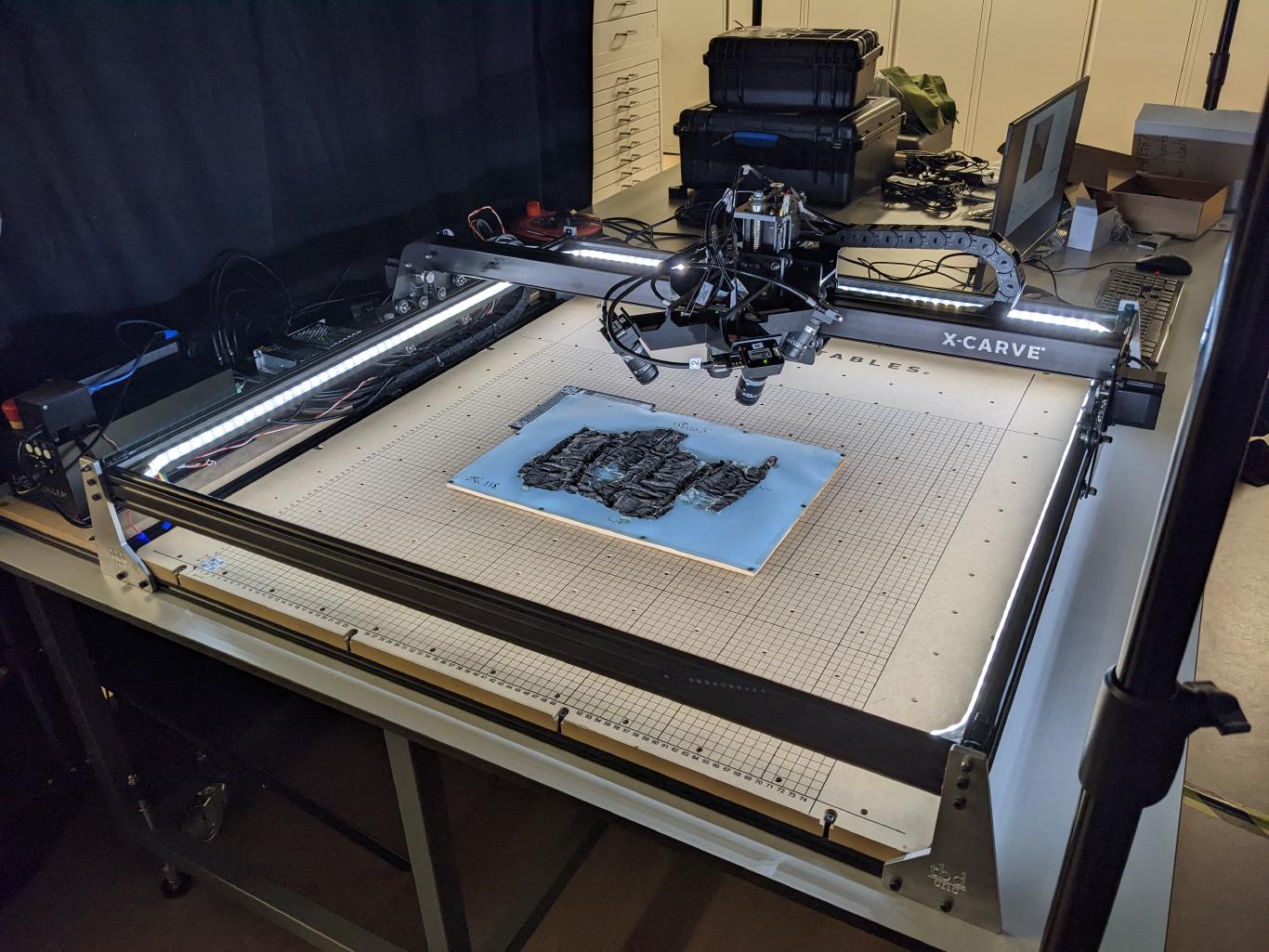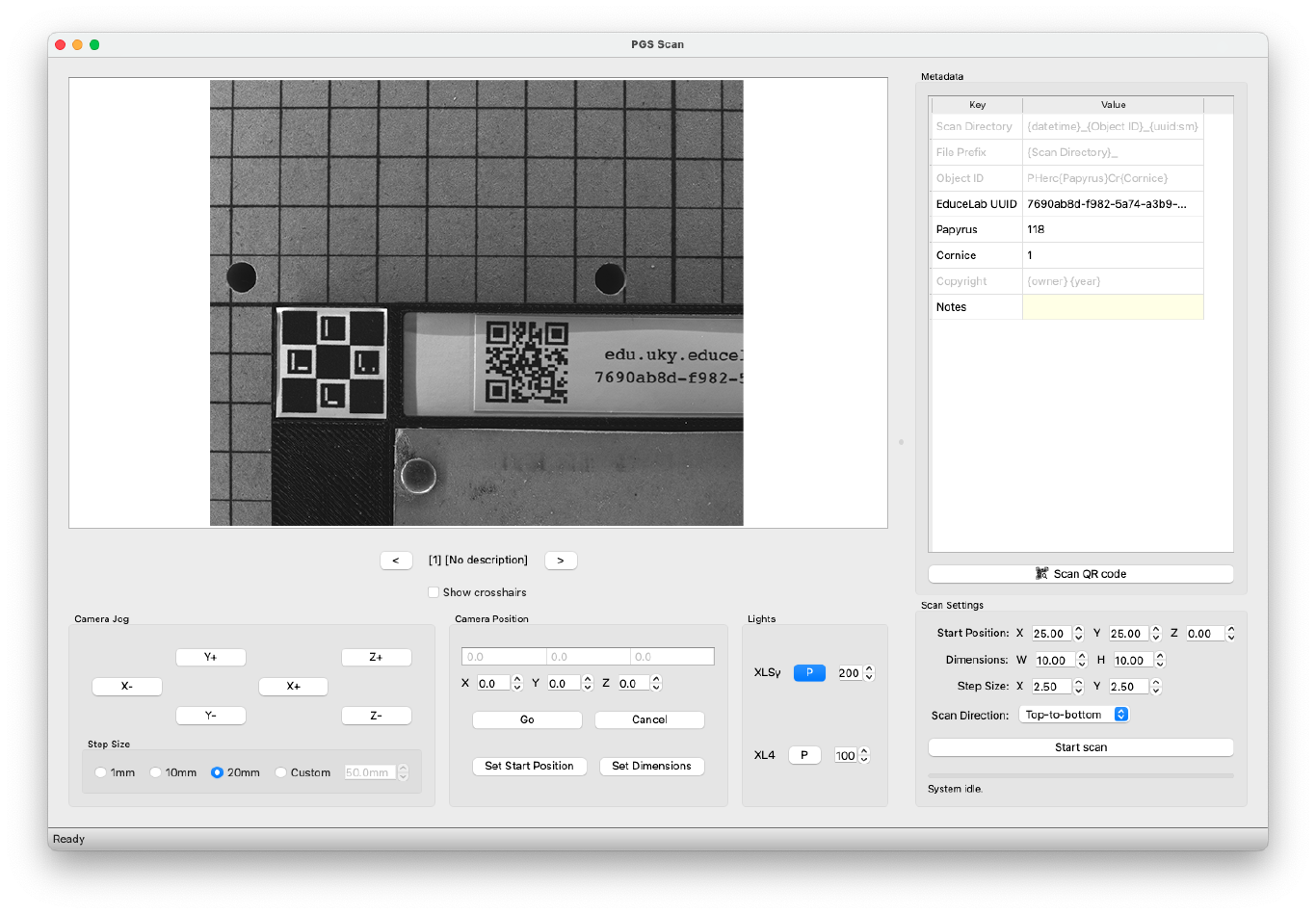Data capture
Application of high-resolution 3D surface scanning and spectral imaging
Multi-dimensional imaging
Herculaneum papyri are notoriously difficult to read due to the fact that multiple layers of papyrus were stuck together when the scrolls were physically unrolled. Seeing Greek letters on a fragment doesn’t always mean that they are on the same layer (or “page”) of papyrus. As such, the opened Herculaneum papyri are a unique set of texts which benefit from both 2D and 3D imaging. Our new images and tools facilitate the process of accurately recognizing Greek letter shapes and distinguishing between the different layers of papyrus present in a given fragment.
Photogrammetry
Photogrammetry is a non-invasive imaging technique where the 3D shape of an object is recovered from multiple photographic images taken at different viewing positions. Our custom-designed photogrammetry scanner travels the surface of a Herculaneum tray, photographing the object from multiple viewing angles and under various lighting conditions. The result is a rich, image-based dataset of hundreds of images which can be explored directly or further processed for 3D reconstruction. After capture, the raw images are processed by our photogrammetry reconstruction pipeline to produce high-resolution 3D models of each tray.

The PGS photogrammetry system scanning PHerc. 118, Pezzo 5. The motorized camera head follows a repeatable path above the tray, capturing images of the sample under multiple lighting conditions.

The PGS Scan control software provides a simple user interface for interacting with the PGS photogrammetry system. Scans can be launched with a single click, making it quick and easy to reliably scan a large number of objects.
Our scanner is built from freely available components, and the source code for both our scanning and reconstruction software is publicly available for download under the terms of the GNU AGPLv3 license:
Get started with PGS Scan Get started with PGS Recon
Multispectral imaging
Every tray of PHerc. 118 was photographed under 16 spectral bands (420-1050nm) with a MegaVision E7, 50-megapixel multispectral imaging system. Software provided by MegaVision automatically generated a color-calibrated RGB image and flatfielded spectral band images at capture time.

The color-calibrated photograph of PHerc. 118, Pezzo 3.
Exploring PHerc. 118
Our new 3D and spectral data is of immediate benefit to the scholars working on these materials. While a scholar is not permitted to physically handle the original object on site, the same limitation does not apply to the digital 3D objects. To this end, we have made our 3D models of PHerc. 118 available in a 3D web viewer called DRI Voyager.

PHerc. 118, Pezzo 2 in DRI Voyager. Every tray of PHerc. 118 is available in 3D with full color or infrared texture images.
Built on top of the Smithsonian Voyager web viewer, DRI Voyager showcases every tray of PHerc. 118 in full 3D, textured with the color and infrared images derived from the new spectral imaging. The ease of working with these images using DRI Voyager is a game changer for scholars. Not only can one conduct critical work via a web browser, but the new spectral images allows one to see into the folds of the damaged papyrus surface. As textual clarity improves over time, the data in the viewer will be updated to make the latest results available to the world.
The source code for DRI Voyager is publicly available for download under the terms of the GNU AGPLv3 license. We additionally make available DRI Voyager Preppy, a set of Python scripts for preparing models for release in DRI Voyager:
Get started with DRI Voyager Preppy Get started with DRI Voyager